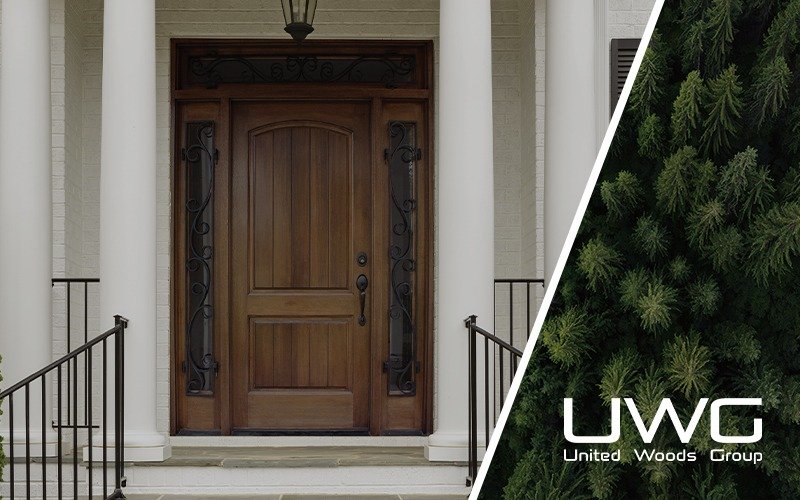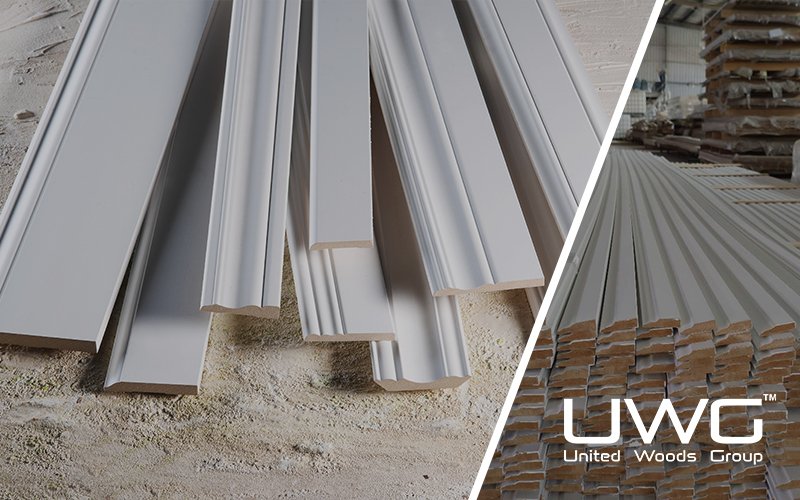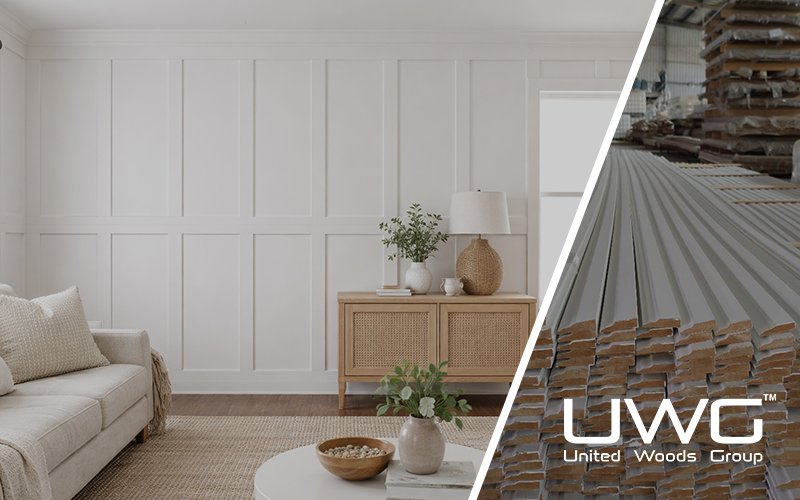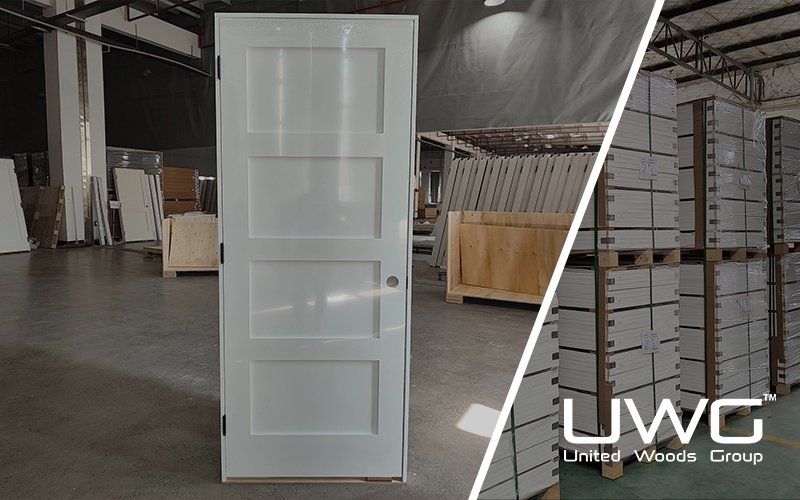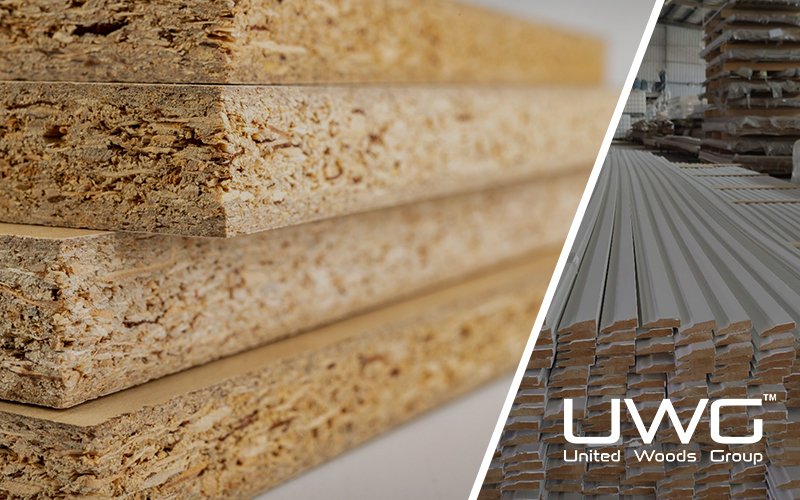Choosing the right door matters more than you think. Builders face tight budgets, client demands, and quality standards. The wrong door means callbacks, the right one means long-term satisfaction. In this guide, I’ll show you exactly how to choose doors that are both strong and cost-effective.
Let’s break it down further—here’s what to consider when selecting the perfect door type for your next build or renovation project.
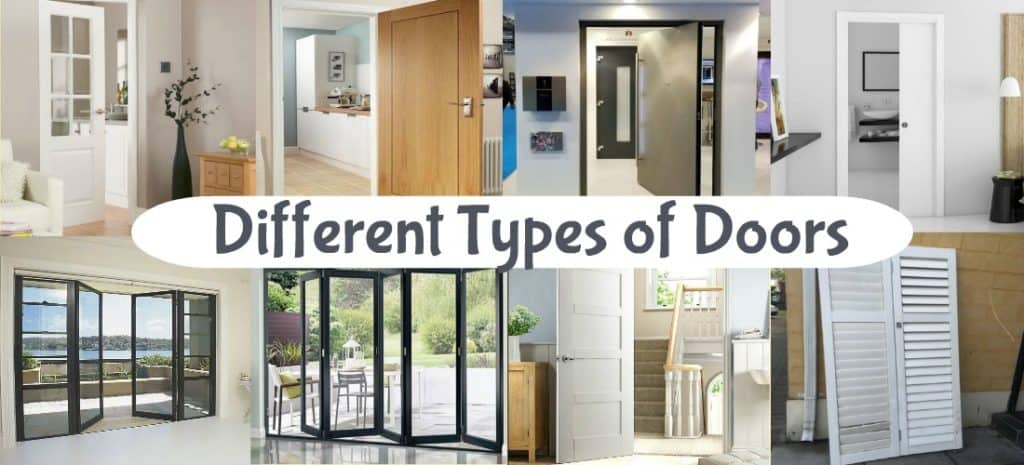
1. What is the Most Durable Type of Door?
For builders focused on long-term performance, steel doors are the top choice for durability. They resist warping, rotting, and cracking even in extreme climates. They’re ideal for exterior use where security and weather resistance are key.
Fiberglass doors are a close second—they can withstand high moisture and temperature changes without deteriorating. These are also resistant to dents and require little maintenance.
For long-term performance, fiberglass (FRP) doors are now often the top choice for builders. They resist warping, cracking, and moisture damage, and require minimal maintenance. Steel doors remain highly durable and secure, especially for entryways that demand extra protection.
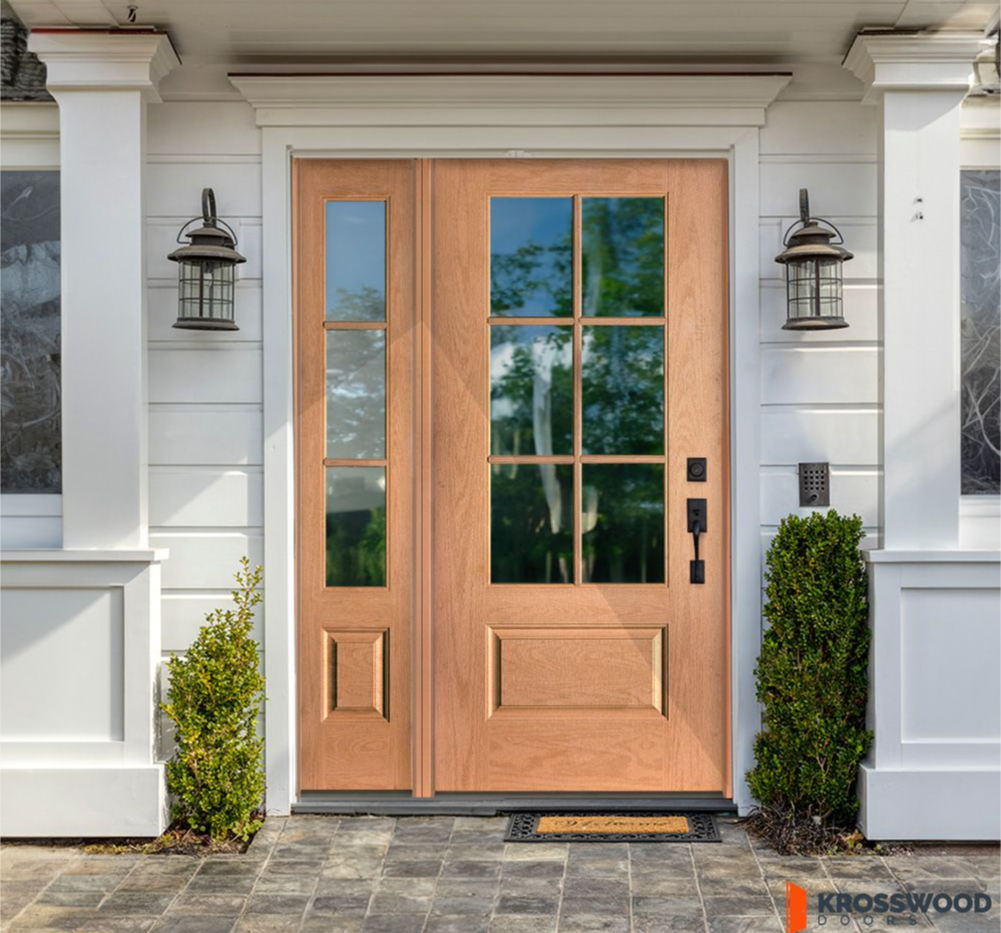
For interior use, solid-core wood, laminate-faced composite, or molded doors perform well in high-traffic areas like schools or hospitals due to their impact resistance and dimensional stability. Molded doors, made from MDF or HDF panels shaped through compression, offer durable and lightweight solutions that mimic traditional paneled doors.
Shaker-style doors also stand out for interiors. Known for their clean lines and recessed panels, they blend well with both modern and classic spaces, while solid or engineered cores resist warping and wear over time.
✅ Tip: Always check the fire rating and material warranty to ensure you’re using doors approved for your building type.
2. Which Type of Door is Cheapest?
If cost is your client’s top concern, hollow-core doors are the most budget-friendly interior option. They feature lightweight frames with cardboard honeycomb or foam cores and are suitable for bedrooms, closets, and low-traffic areas.
Molded panel doors, often factory-primed and ready for paint, offer a refined look at a fraction of the cost of solid wood. Their mass-production process keeps costs low while still providing good durability and daily-use resistance.
For exterior applications, fiberglass doors now take priority for durability and low maintenance, even if initial costs are slightly higher. Steel doors remain a strong, cost-effective option when considering lifespan and upfront price.
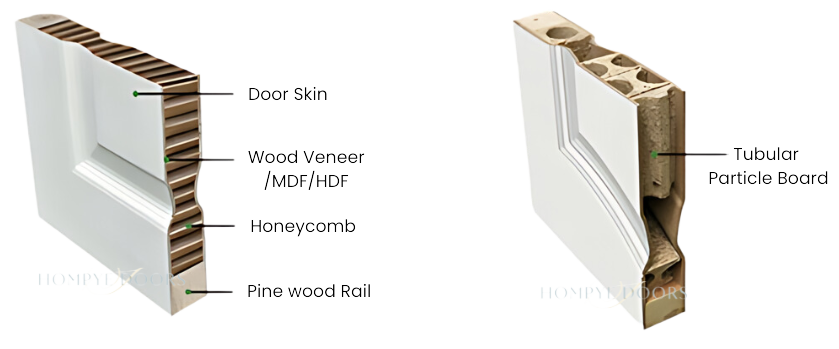
3. What is the Best Material for a Door?
It depends on where and how the door will be used:
- Fiberglass: Durable, weather-resistant, low maintenance (ideal for front doors)
- Steel: Strong, secure, fire-resistant (great for exterior or utility doors)
- Wood: Elegant and solid, but higher cost and maintenance (premium interiors)
- Aluminum: Lightweight, corrosion-resistant, often used in commercial or sliding applications
- PVC/Plastic: Ideal for wet areas like bathrooms or service entrances
Builders should weigh both aesthetic preferences and functional needs when selecting materials.
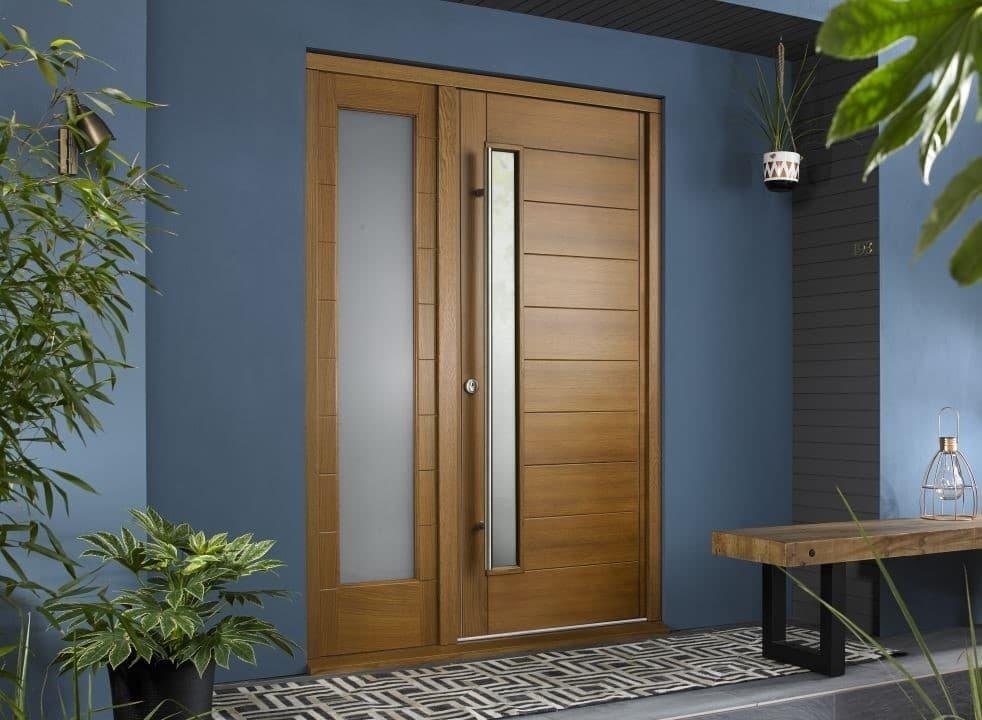
Builders must weigh both aesthetic requirements and functional needs when choosing.
4. How Do I Choose a Good Quality Door?
As a builder, here’s your quick checklist:
- ✅ Purpose: Interior vs exterior?
- ✅ Material: Based on durability, insulation, and aesthetics
- ✅ Core Type: Solid vs hollow-core
- ✅ Energy Efficiency: Look for Energy Star ratings and U-values
- ✅ Fire Rating: Especially important in multi-unit and commercial builds
- ✅ Hardware Compatibility: Hinges, locks, closers must fit well
- ✅ Manufacturer Reputation: Choose reliable suppliers with certifications
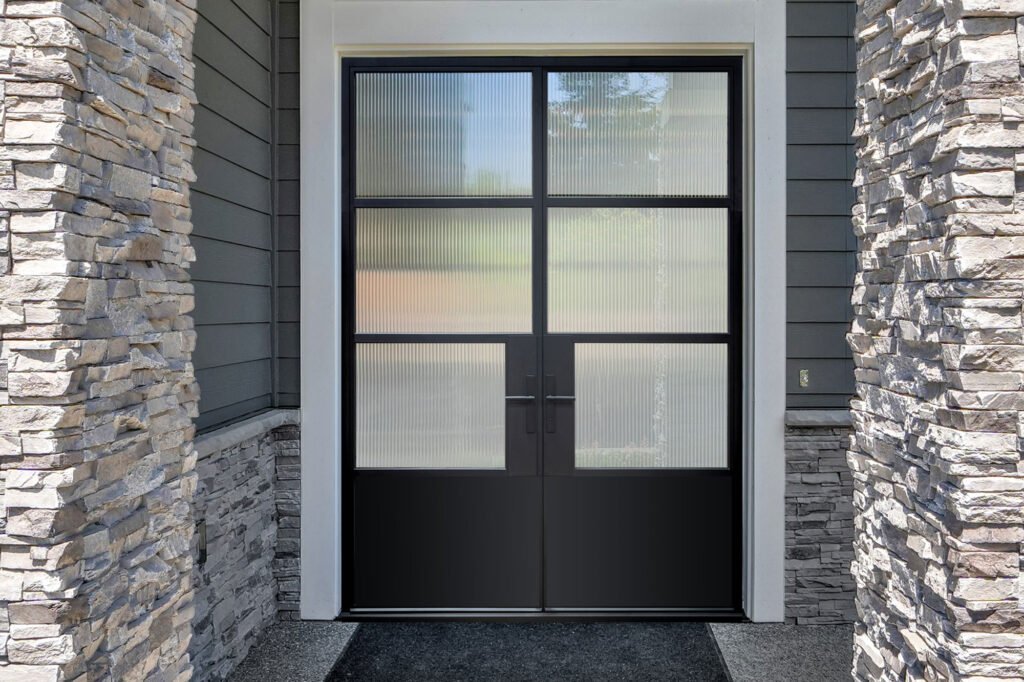
5. Best Door Material for Houses vs Commercial Buildings
Residential Homes:
- Front Door: Fiberglass (FRP) or solid wood for curb appeal and insulation
- Interior Doors: Hollow-core for cost savings; solid-core, molded, or Shaker for strength and soundproofing
- Back Door/Garage Access: Steel for security
Commercial Projects:
- Entry/Exit Doors: Fiberglass, steel, or aluminum with panic hardware
- Fire Doors: Certified metal or composite
- Restroom Doors: PVC or laminate-faced core for moisture resistance
- Office/Interior Doors: Molded or Shaker-style composite doors for polished, consistent look
Builders must consider not only budget, but compliance, durability, and functional requirements for each space.

Summary
Finding the right door doesn’t need to be a guessing game. Stick to proven materials, consider function and climate, and balance durability with cost.

